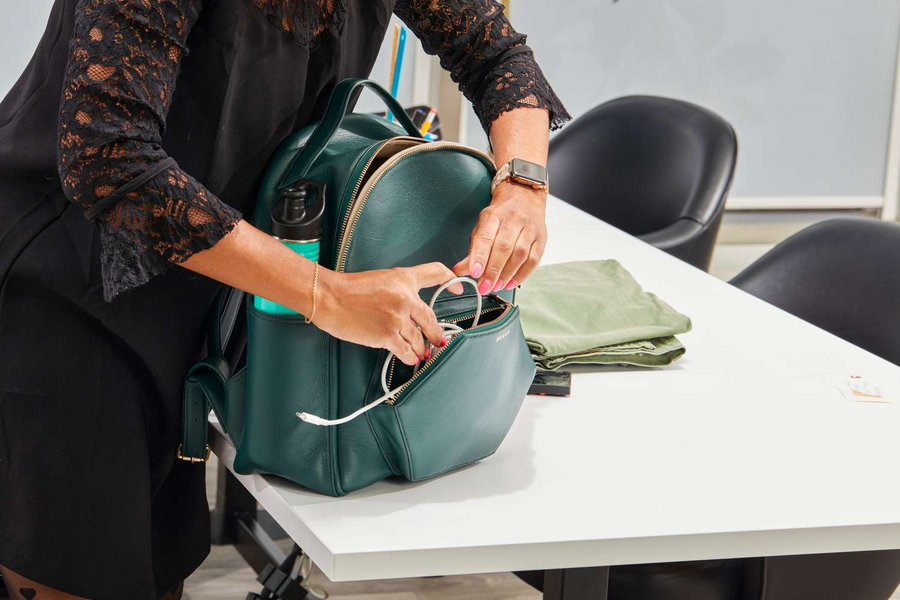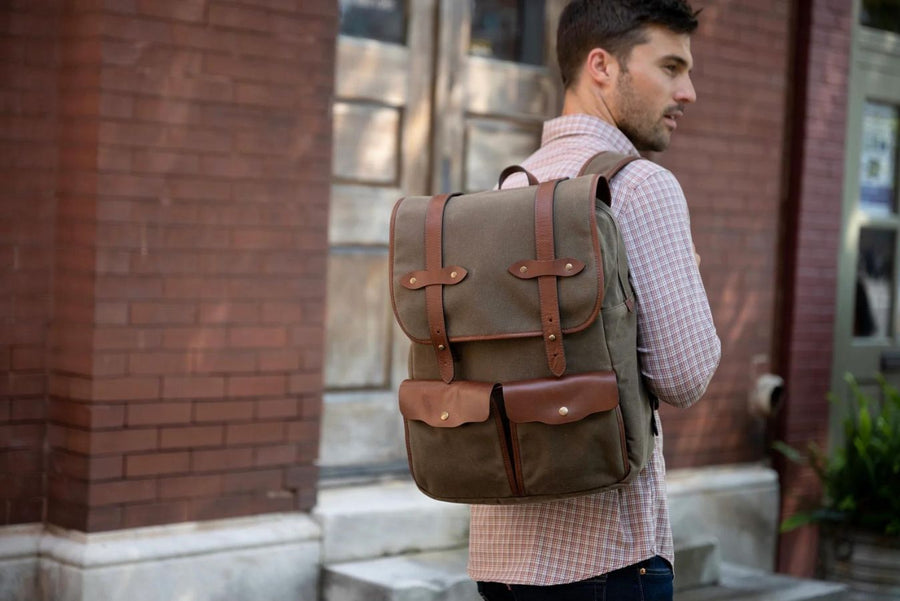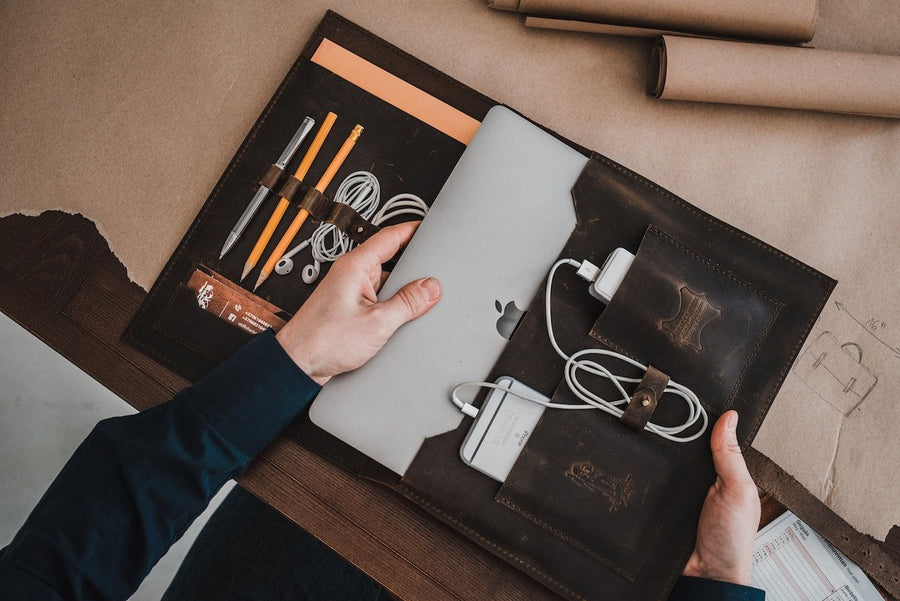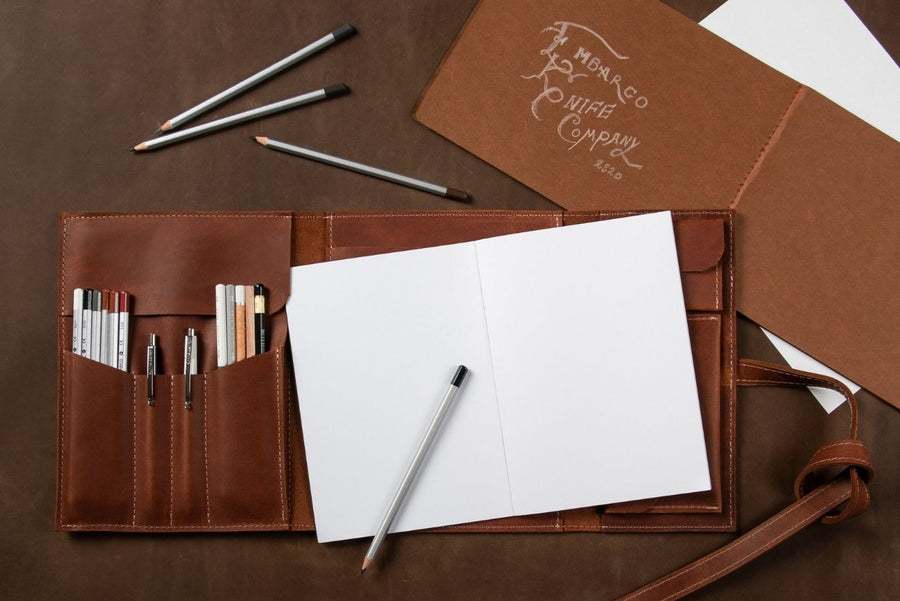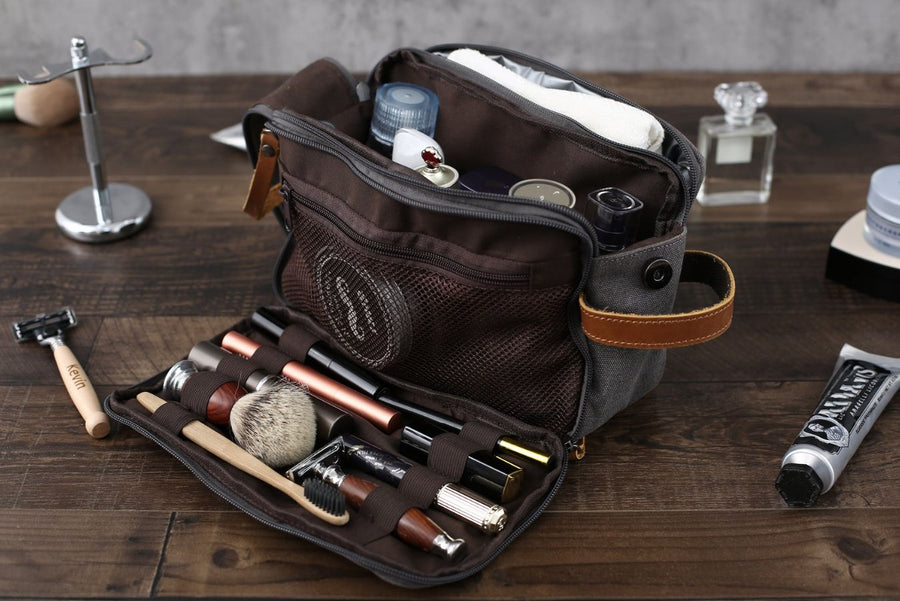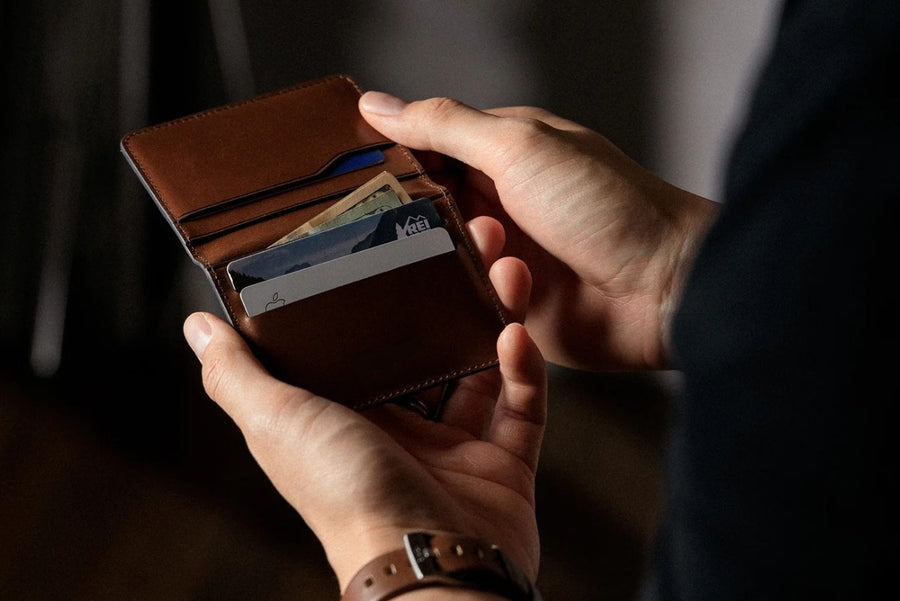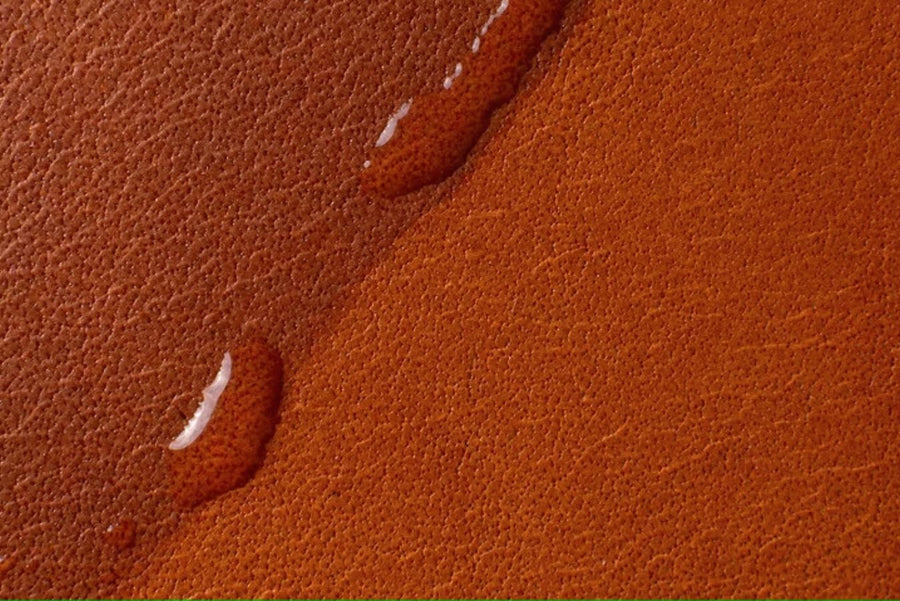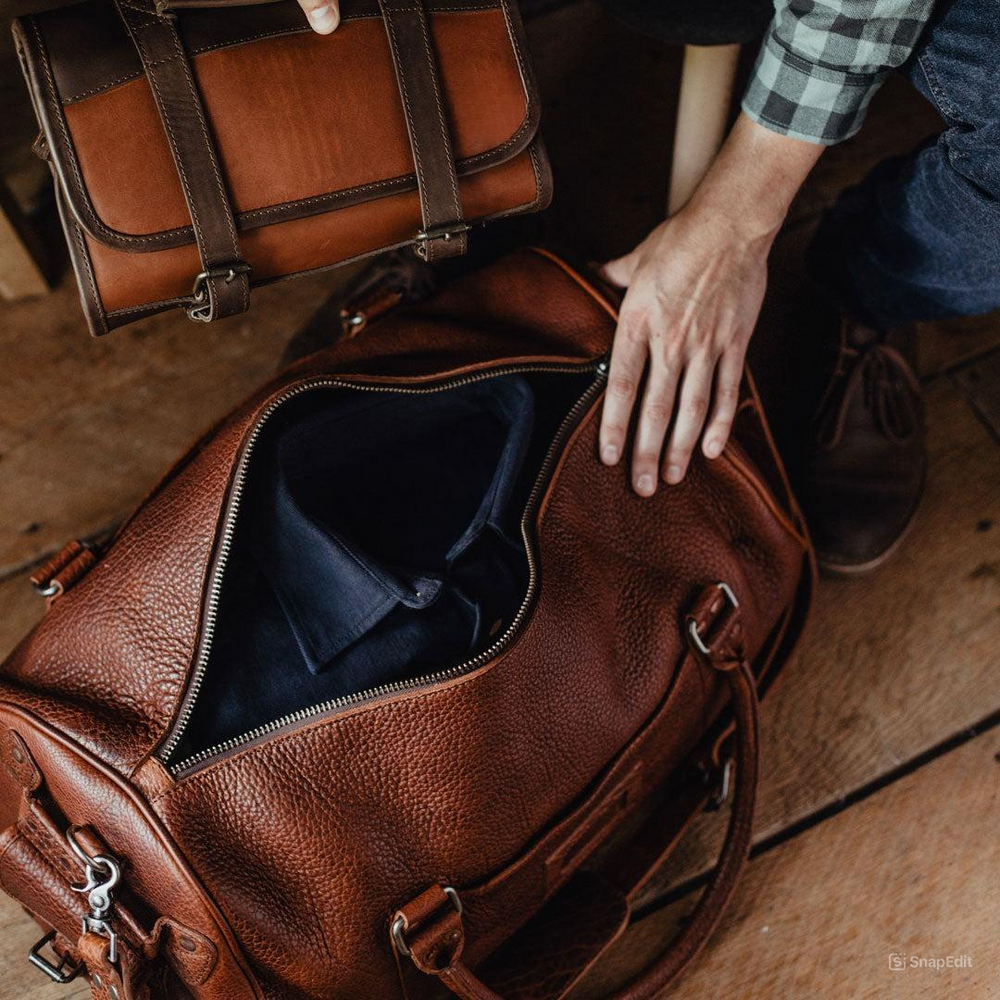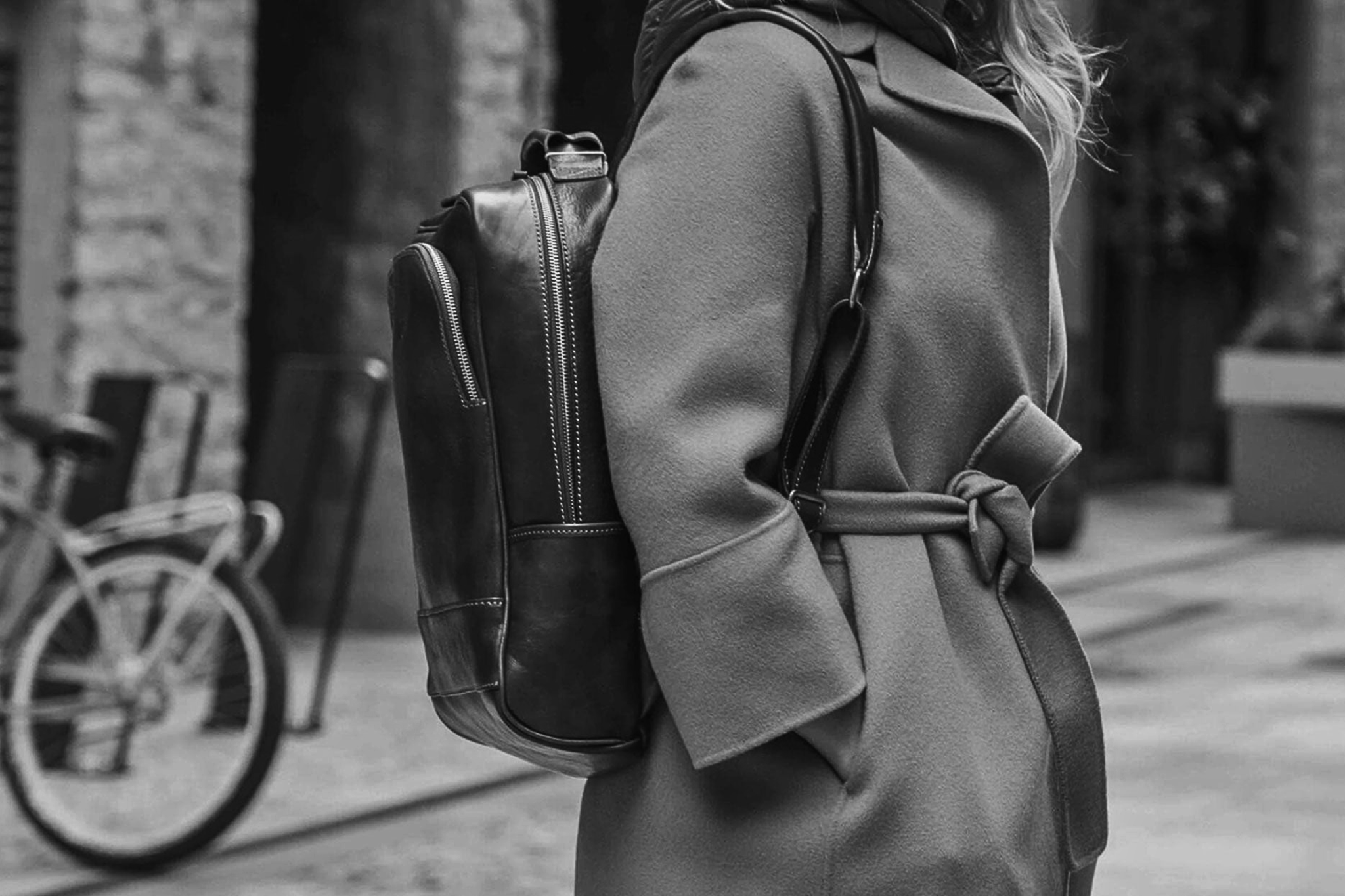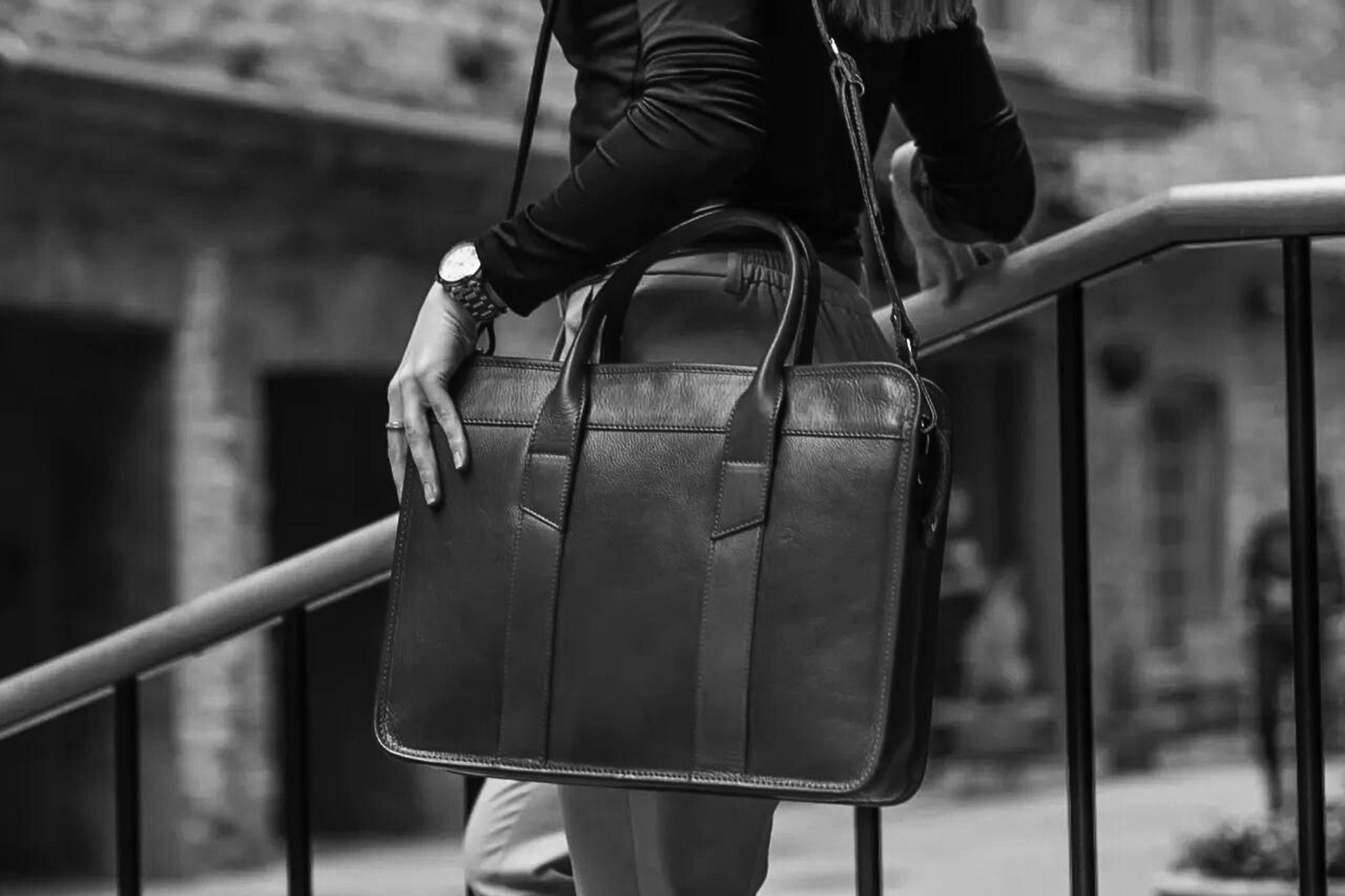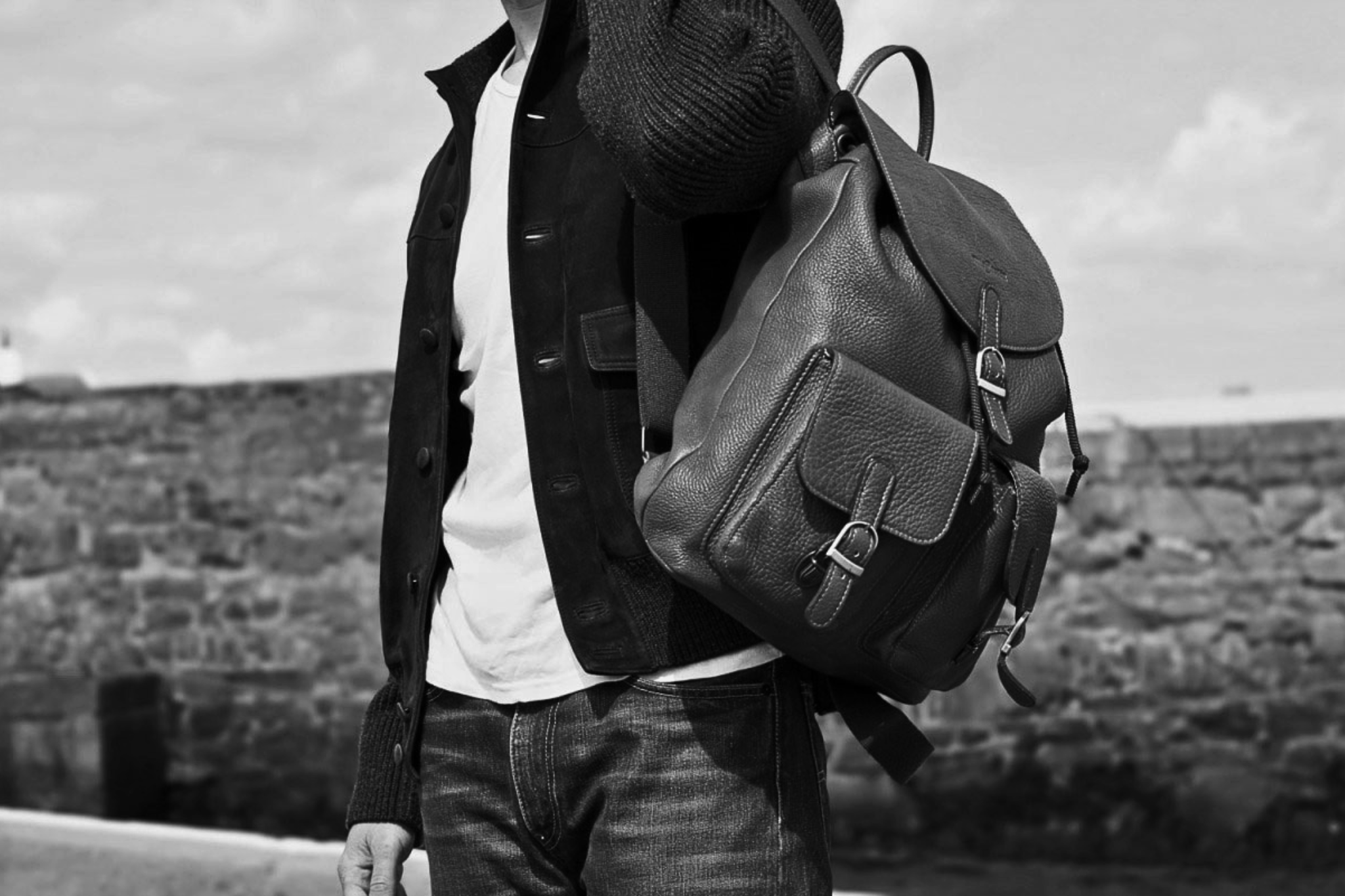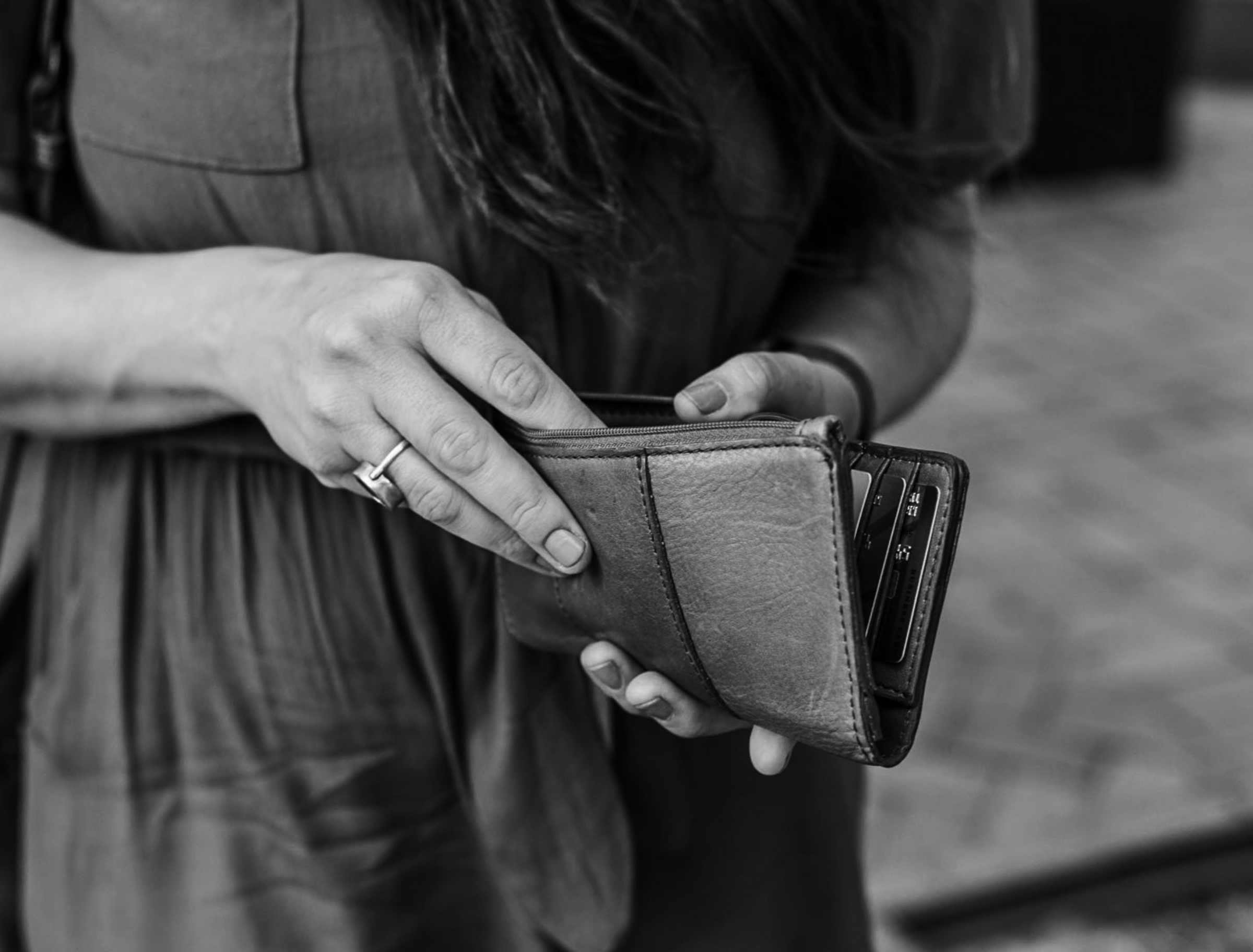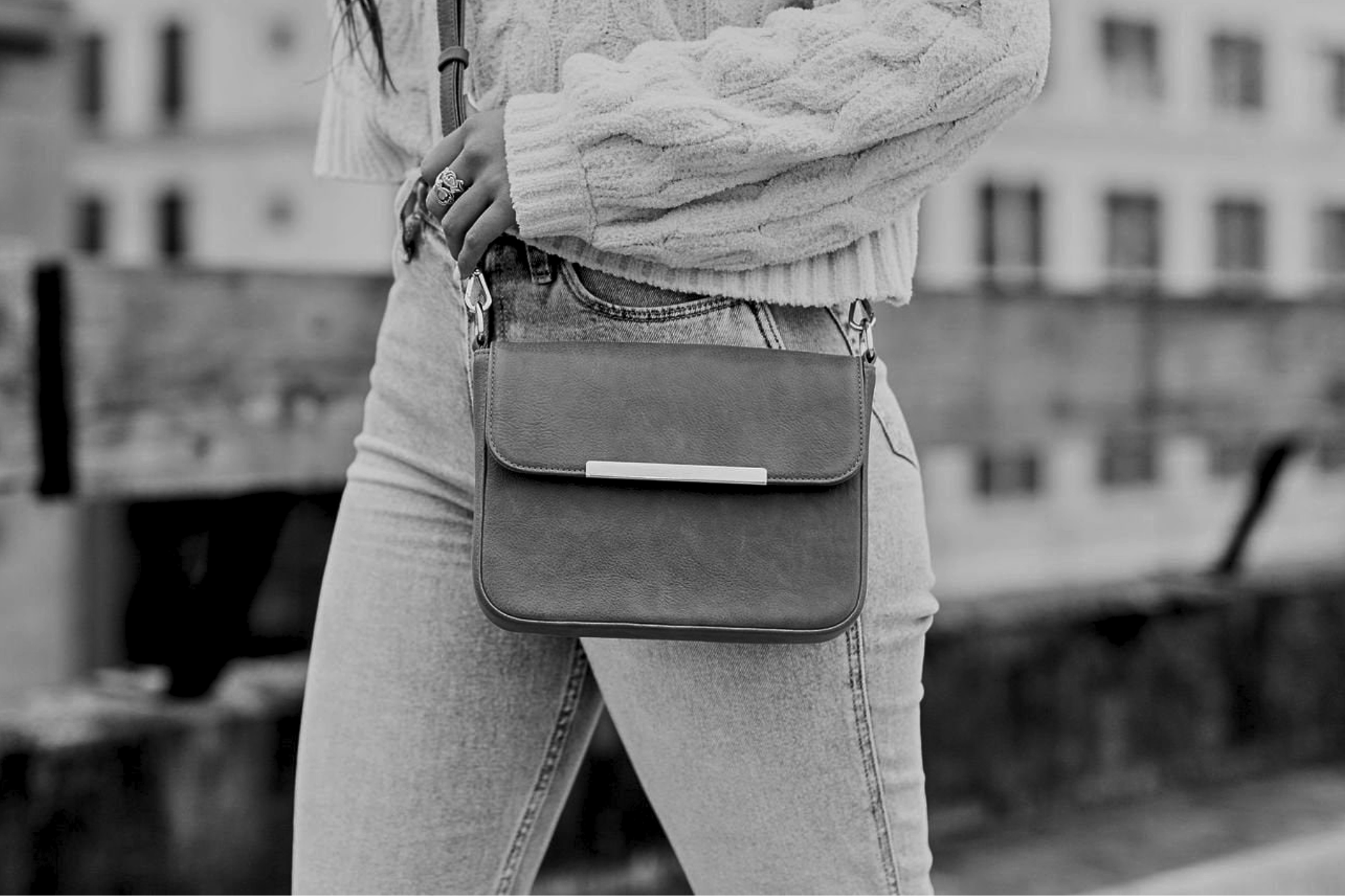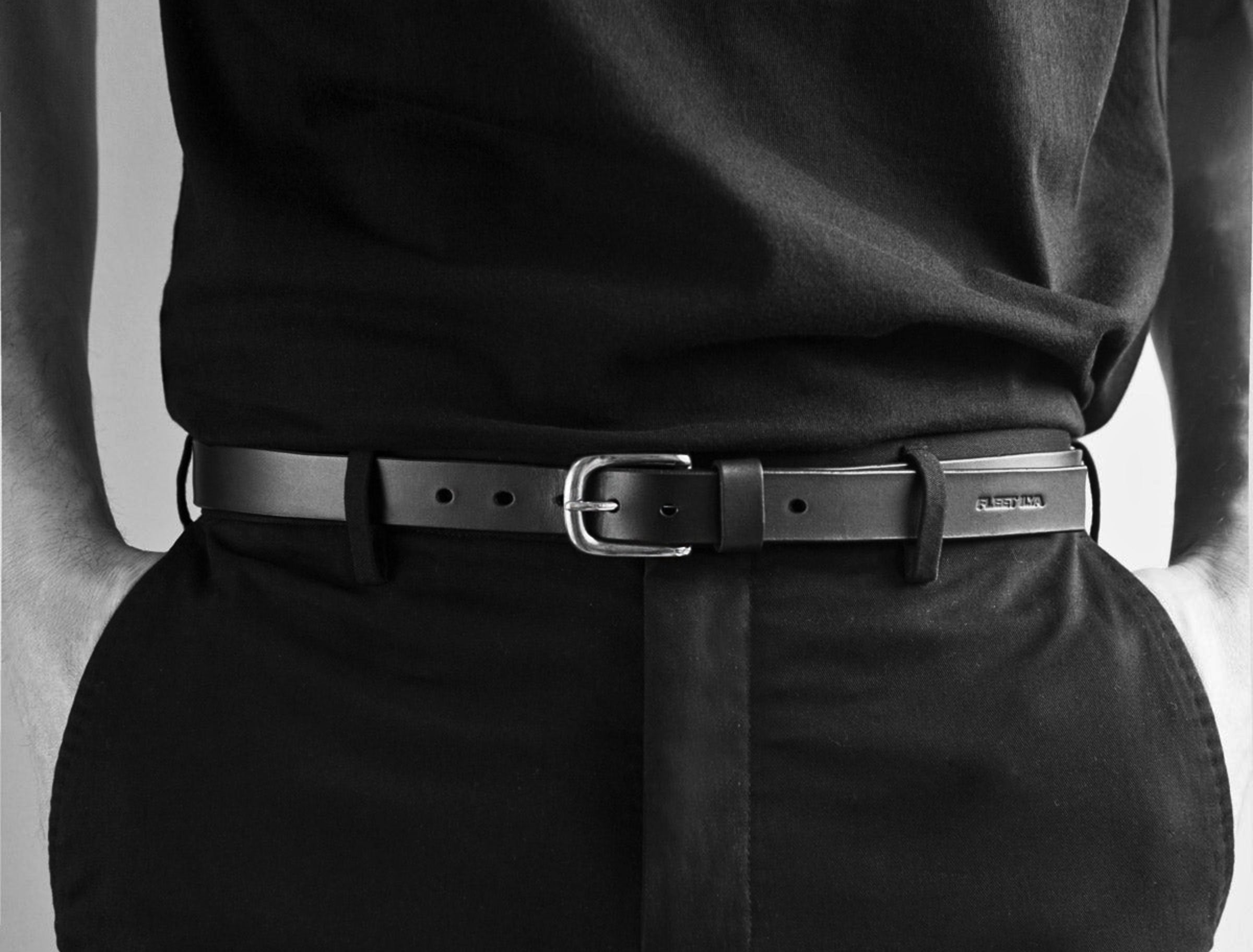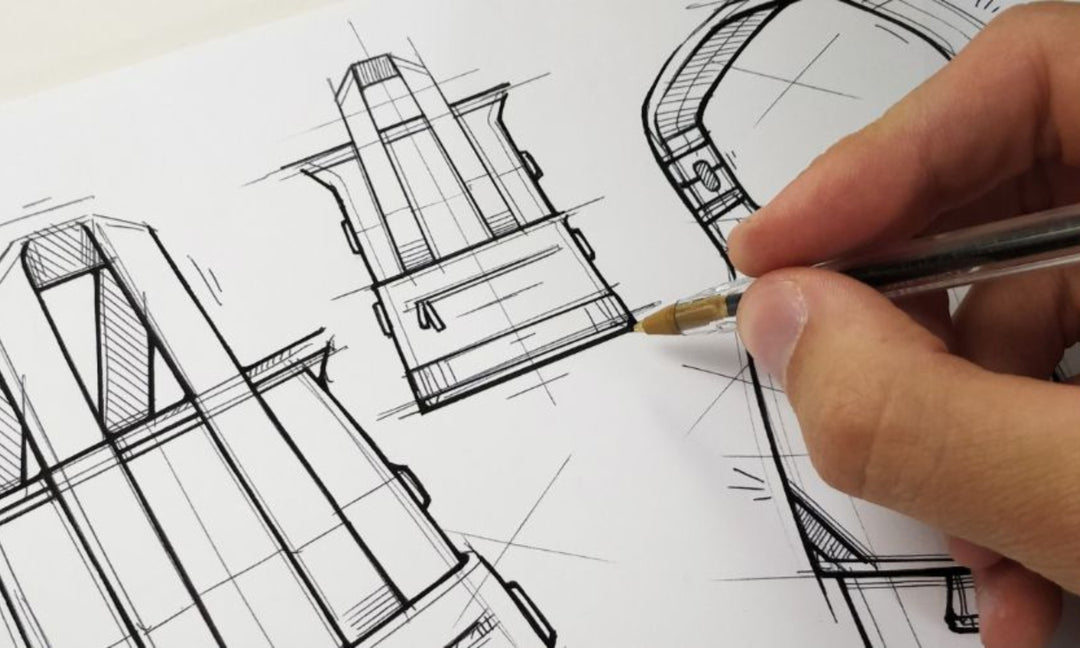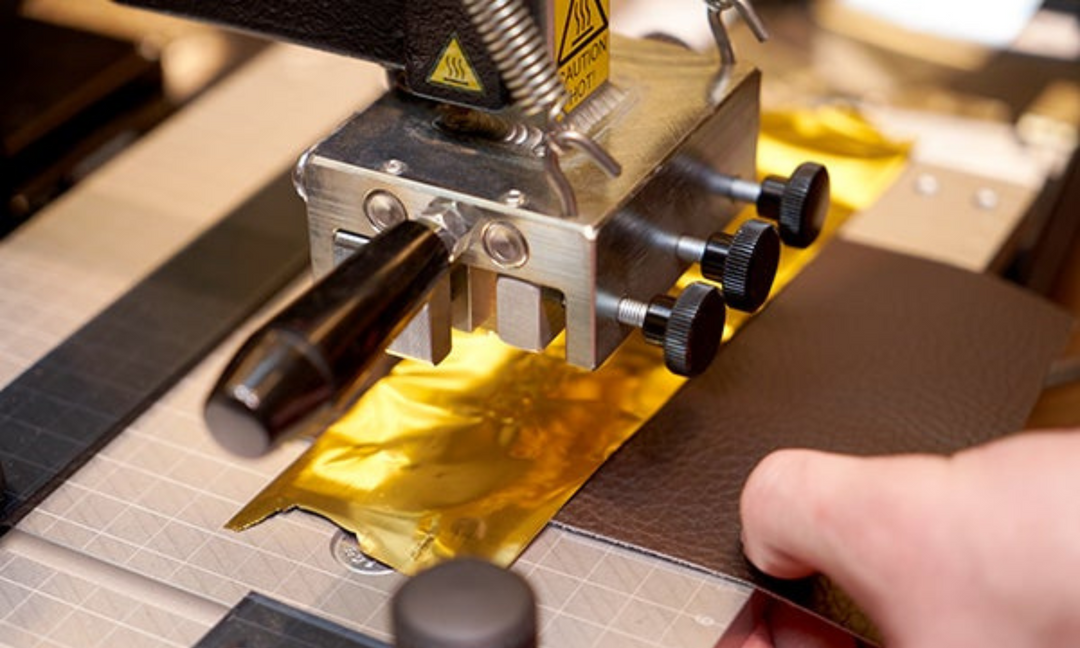Caring for your investment: maintenance and cleaning tips for leather tote bags
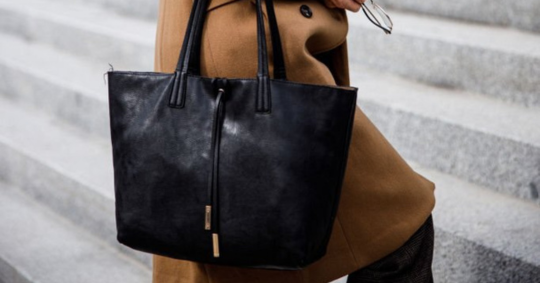
Caring for your investment: maintenance and cleaning tips for leather tote bags
Introduction
A brief history
The allure of leather
Versatility in design
1. Classic tote
2. Bucket tote
3. Tote with pockets
4. Tote with embellishments
Why proper care matters?
1. Regular cleaning
2. Conditioning
3. Storage
4. Avoid water
5. Professional cleaning

Types of leather used in tote bags
Full-grain leather
Key characteristics:
- Durability: Full-grain leather is incredibly durable and resistant to wear and tear. It can withstand daily use and still look great over time.
- Aging gracefully: Full-grain leather develops a beautiful patina as it ages, giving the bag a rich and distinguished appearance.
- Strength: It is known for its strength and can handle heavy loads without stretching or tearing.
- Natural beauty: The natural grain patterns and markings make each full-grain leather tote bag one-of-a-kind.
Top-grain leather
Key characteristics:
- Smooth finish: Top-grain leather has a smoother and more uniform surface compared to full-grain leather.
- Softness: It tends to be softer and more supple, making it comfortable to carry.
- Resistant to stains: The finishing process can make top-grain leather more resistant to stains and easier to clean.
- Affordability: It is often more affordable than full-grain leather while still offering good quality.
Genuine leather
Key characteristics:
- Affordability: Genuine leather is often the least expensive option, making it accessible to a wider range of consumers.
- Less durability: It may not be as durable or long-lasting as full-grain or top-grain leather.
- Appearance: The appearance can vary widely, and it may lack the natural beauty and character found in higher-quality leathers.
- Limited aging: Genuine leather may not age as gracefully and develop a patina like full-grain leather.
Faux leather (synthetic leather)
Key characteristics:
- Cruelty-free: Faux leather is animal-friendly and does not involve the use of animal hides.
- Versatility: It can mimic the look and texture of real leather, offering a wide range of design possibilities.
- Affordability: Faux leather is often more affordable than genuine leather.
- Durability: While it may not match the durability of high-quality leather, faux leather can still be quite durable if well-made.
Assessing the condition of your leather tote bag
Visual inspection
-
Natural light: Find a well-lit area with natural light to examine your bag. Adequate lighting helps you spot imperfections and changes in the leather's color or texture.
-
Exterior examination: Start by inspecting the exterior of the bag. Look for any visible stains, scratches, scuffs, or discolorations on the leather surface. Pay attention to the seams, edges, and corners, as these areas are prone to wear and tear.
-
Hardware: Check the hardware elements, such as zippers, buckles, and studs, for signs of rust, tarnish, or damage. Ensure they are functioning correctly.
-
Straps and handles: Examine the straps and handles for any signs of fraying, cracking, or weakening. These areas are subjected to repeated stress and may need special attention.
-
Interior inspection: Open your tote bag and inspect the interior lining. Look for tears, stains, or loose threads. Make sure any pockets or compartments are clean and free of debris.
-
Odor: Take note of any unusual odors emanating from the bag. Leather tote bags should have a pleasant, natural leather scent. Unpleasant odors may indicate moisture or mildew issues.
The touch test
-
Clean hands: Ensure your hands are clean and free of any dirt or oils before touching the leather.
-
Texture: Gently run your fingers over the leather surface. High-quality leather should feel smooth and supple. If you notice roughness, stiffness, or uneven textures, it may indicate dryness or damage.
-
Flexibility: Bend and flex the leather in various areas, such as the corners and handles. It should feel pliable and not overly stiff or brittle. Stiffness can be a sign of dehydration.
-
Moisture check: Press a fingertip against the leather and release it. If the leather quickly absorbs the moisture from your fingertip, it may be in need of conditioning.
Structural integrity
-
Weight distribution: Load your tote bag with a typical amount of items that you would carry daily. Pay attention to how the bag handles the weight. If you notice sagging, stretching, or misshapen areas, it may indicate structural issues.
-
Seams and stitching: Inspect the seams and stitching throughout the bag. Ensure that there are no loose threads, popped stitches, or fraying. Damaged stitching can compromise the bag's strength.
-
Handles and straps: Test the handles and straps by gently tugging and pulling on them. They should feel secure and show no signs of detachment or weakness.
-
Bottom support: Check the bottom of the bag, which often bears the brunt of weight. Ensure that any reinforcements or feet are intact and providing support.
Essential tools and supplies
Soft brush
-
Dust removal: Use the soft brush to gently remove dust, dirt, and debris from the surface of the leather. Regular dusting prevents particles from embedding themselves in the leather's pores.
-
Surface cleaning: Brushing also helps distribute natural oils in the leather, which can enhance its sheen and suppleness. It's an excellent step for routine maintenance.
Leather conditioner
-
Hydration: Leather can dry out over time, leading to stiffness and potential cracking. Leather conditioner moisturizes the leather, preventing it from becoming too dry and brittle.
-
Restoration: It helps restore the natural oils in the leather, ensuring it remains supple and pliable. This is especially important for older or well-loved tote bags.
-
Protection: Leather conditioner creates a protective barrier that repels water and shields the leather from stains and spills.
-
Enhanced appearance: Regular conditioning can enhance the leather's color and luster, keeping it looking vibrant and beautiful.
Leather cleaner
-
Stain removal: Leather can be susceptible to stains, especially light-colored leather. A leather cleaner effectively lifts and removes stains without damaging the leather.
-
Deep cleaning: It provides a deep clean, getting into the pores of the leather to remove embedded dirt and oils that may accumulate over time.
-
Preparation for conditioning: Before applying leather conditioner, it's essential to clean the leather thoroughly to ensure that the conditioner can penetrate effectively.
Microfiber cloth
-
Application: Use a microfiber cloth to apply leather conditioner or cleaner evenly across the leather surface. The fine fibers of the cloth ensure a smooth and consistent application.
-
Buffing: After applying conditioner or cleaner, use a clean microfiber cloth to gently buff the leather. This process helps remove excess product and leaves the leather with a polished finish.
-
Lint-free: Microfiber cloths are lint-free, ensuring that no fibers are left behind on the leather's surface.
Daily maintenance routine
Removing surface dirt and dust
-
Daily dusting: Begin by gently dusting your leather tote bag daily with a soft brush. This simple step removes surface dirt and prevents it from settling into the leather's pores.
-
Check for debris: Pay close attention to seams, corners, and any creases where dirt might accumulate. Use the soft brush to dislodge any trapped debris.
-
Wipe down: For quick touch-ups, use a clean, dry microfiber cloth to wipe the bag's surface. This will remove any remaining dust and give your tote a polished appearance.
Protecting against stains
-
Preventive measures: To protect your leather tote from stains, avoid placing it on dirty or rough surfaces. Be cautious when setting it down in public places, and consider using a bag hook to keep it off the ground.
-
Immediate cleaning: If your bag does come into contact with a substance that could cause a stain (such as spilled liquid or ink), address it immediately. Blot the stain gently with a clean, dry cloth to absorb as much of the substance as possible.
-
Use a leather protector: Consider applying a leather protector or water repellent designed for your specific type of leather. This extra layer can help shield your tote from potential stains and water damage.
Proper storage
-
Empty your bag: At the end of the day, empty your leather tote bag completely. This prevents unnecessary strain on the handles and maintains the bag's shape.
-
Store upright: When not in use, store your tote bag in an upright position in a cool, dry place. Ensure it is not in direct sunlight, as prolonged exposure to sunlight can cause leather to fade.
-
Stuff it: To help your tote bag retain its shape, consider stuffing it with acid-free tissue paper or a soft cloth. This prevents creasing and maintains the bag's structure.
-
Cover it: If you won't be using your leather tote for an extended period, consider covering it with a breathable dust bag. This protects it from dust and allows the leather to breathe.
Periodic deep cleaning
When to deep clean?
-
As needed: The frequency of deep cleaning your leather tote bag depends on its usage and exposure to dirt, stains, and environmental factors. As a general guideline, consider deep cleaning every six months to a year.
-
After stains: Perform a deep clean immediately if your bag encounters significant stains or spills that cannot be removed with daily maintenance.
Step-by-step cleaning process
1. Preparing the leather
-
Empty the bag: Before you begin, ensure that your tote bag is completely empty. This allows you to access all areas of the interior and exterior.
-
Dust removal: Use a soft brush to gently remove any loose dirt or dust from the surface. Be thorough in your dusting to avoid scratching the leather during the cleaning process.
2. Applying the cleaner
-
Choose the right cleaner: Select a high-quality leather cleaner that is appropriate for the type of leather your bag is made from (e.g., full-grain, top-grain, or genuine leather).
-
Test in a hidden area: Before applying the cleaner to the entire bag, test it on a small, inconspicuous area to ensure it doesn't cause any adverse reactions or discoloration.
-
Application: Apply a small amount of the cleaner to a clean, dry, and soft cloth or sponge. Gently rub the cloth in a circular motion over the leather's surface, focusing on areas with stains or heavy dirt buildup.
3. Gentle scrubbing
-
Scrubbing: Use a gentle, circular motion to work the cleaner into the leather. Avoid excessive pressure or aggressive scrubbing, as this can damage the leather's surface.
-
Stubborn stains: For stubborn stains, you may use a soft-bristle toothbrush or a specialized leather cleaning brush to scrub the affected areas. Be gentle and patient.
-
Rinse and repeat: If necessary, dampen a clean cloth with water and wipe down the leather to remove any remaining cleaner. Then, allow the bag to air dry completely.
4. Drying the bag
-
Air dry: After cleaning, allow your tote bag to air dry naturally. Do not use direct heat sources such as hairdryers or heaters, as they can cause the leather to crack or lose its natural oils.
-
Shape maintenance: While the bag is drying, maintain its shape by stuffing it with clean, dry towels or acid-free tissue paper.
Conditioning for suppleness
-
Select a leather conditioner: Choose a high-quality leather conditioner that is compatible with your specific type of leather.
-
Application: Apply a small amount of the conditioner to a clean, dry cloth. Gently rub it onto the leather's surface in a circular motion, ensuring even coverage.
-
Buffing: Use a fresh, dry microfiber cloth to buff the leather gently. This not only removes excess conditioner but also adds a beautiful shine to your tote bag.
-
Allow absorption: Let the conditioner absorb into the leather for the recommended time specified on the product label.
-
Repeat as needed: Depending on the leather's condition and usage, you may need to condition your tote bag every few months to keep it soft and supple.
Treating stains and spills
Identifying common stains
-
Ink stains: These are often caused by leaking pens or markers and can be particularly troublesome due to their dark color.
-
Liquid stains (e.g., coffee, wine): Spills from beverages like coffee, wine, or soda can leave noticeable stains on leather.
-
Oil or grease stains: These can result from contact with oily food, makeup, or even natural skin oils.
-
Ink stains: These are often caused by leaking pens or markers and can be particularly troublesome due to their dark color.
-
Water stains: Water can leave marks on leather if it's allowed to dry without proper care.
Immediate actions
-
Blot, don't rub: Use a clean, dry cloth or paper towel to blot the stain gently. Avoid rubbing, as this can spread the stain.
-
Work from the edges: Start blotting from the outer edges of the stain and gradually move toward the center. This prevents the stain from spreading further.
-
Patience is key: Be patient and persistent when blotting. It may take several rounds of blotting to absorb the stain fully.
-
Avoid water: Do not use water to try and clean the stain, as it can create water spots on the leather.
Stain-specific remedies
1. Ink stains:
-
Commercial leather cleaner: Apply a commercial leather cleaner specifically designed to remove ink stains. Follow the product instructions carefully.
-
Isopropyl alcohol: Dampen a cotton swab or cotton ball with isopropyl alcohol (at least 70% concentration). Gently dab the ink stain, being careful not to spread it. Blot with a clean cloth. Repeat as necessary.
2. Liquid stains (e.g., coffee, wine):
-
Blot excess liquid: First, blot the excess liquid gently with a clean cloth or paper towel.
-
Talcum powder or cornstarch: Sprinkle talcum powder or cornstarch over the stain to absorb the remaining moisture. Let it sit for several hours or overnight, then brush away the powder.
3. Oil or grease stains:
-
Talcum powder or cornstarch: Similar to liquid stains, sprinkle talcum powder or cornstarch over the stain to absorb the oil. Let it sit for several hours or overnight, then brush away.
-
Leather degreaser: If the stain persists, consider using a leather degreaser following the product instructions.
4. Water stains:
-
Blot the area: If you notice a water stain, blot the area gently with a clean, dry cloth to remove surface moisture.
-
Even out the leather: To even out the water stain, moisten the entire leather surface with a clean, damp cloth. Allow it to air dry naturally. This should help the leather return to its original color.
Preventing mold and mildew
Moisture control
-
Dry bag after use: After using your leather tote bag in wet or rainy conditions, make sure to dry it thoroughly. Use a clean, dry cloth to wipe away any moisture on the surface.
-
Use silica gel packs: Place silica gel packs inside your tote bag when storing it. These packs help absorb excess moisture and prevent mold growth.
-
Avoid overstuffing: Overloading your bag with items can reduce airflow within it. This can trap moisture and increase the risk of mold. Keep your bag moderately filled to allow air circulation.
-
Avoid damp areas: Be cautious when placing your bag on damp or wet surfaces, such as bathroom countertops or wet grass. Always try to keep your bag dry.
Storage in humid climates
-
Climate-controlled environment: If you live in a humid climate, store your leather tote bag in a climate-controlled environment whenever possible. This helps maintain stable humidity levels and prevents mold growth.
-
Use desiccants: In particularly humid regions, consider using moisture-absorbing desiccants like activated charcoal or silica gel within the storage area. These will help keep the environment dry.
-
Regular inspections: Periodically inspect your bag for signs of mold, especially during humid seasons. Early detection allows for prompt action.
Mold removal tips
-
Isolate the bag: Remove the bag from other items to prevent the spread of mold spores.
-
Ventilation: Place the bag in a well-ventilated area, ideally outdoors, to prevent inhaling mold spores. Do this on a sunny day if possible, as sunlight can help kill mold.
-
Brush off loose mold: Gently brush off any loose mold from the surface using a soft-bristle brush or cloth. Do this outdoors to avoid spreading mold indoors.
-
Vinegar solution: Mix a solution of equal parts white vinegar and water. Dampen a clean cloth with the solution and gently wipe the affected areas of the bag. Vinegar helps kill mold and remove stains.
-
Drying: Allow the bag to air dry thoroughly in the sun if possible. Ensure that it is completely dry before storing it again.
-
Leather conditioner: After mold removal, use a leather conditioner to rehydrate the leather and restore its suppleness.
-
Professional cleaning: If the mold growth is extensive or stubborn, consider taking your tote bag to a professional leather cleaner. They have the expertise and equipment to handle severe mold issues.
Dealing with scratches and scuffs
Minor scratch repair
-
Clean the surface: Start by cleaning the scratched area with a leather cleaner. This removes dirt and grime, making it easier to assess the damage.
-
Use a leather conditioner: Apply a small amount of leather conditioner to the scratch. Rub it in gently using a soft, clean cloth. This can sometimes help diminish the appearance of minor scratches by moisturizing and smoothing the leather.
-
Buff with a soft cloth: After applying the conditioner, buff the area gently with a clean, dry microfiber cloth. This can help blend the scratch with the surrounding leather.
-
Patience: Minor scratches may naturally become less noticeable with regular use as the leather naturally ages and develops a patina. Be patient, as this process can take time.
Camouflaging scuffs
-
Leather polish or cream: For scuffs that are more noticeable, consider using a leather polish or cream that matches the color of your tote bag. Apply a small amount of the product to the scuffed area and rub it in using a soft cloth. This can help cover up the scuff and restore some of the color.
-
Rubbing with fingers: Sometimes, rubbing the scuffed area with your fingers can generate enough heat to help the leather's natural oils redistribute and minimize the scuff. Gently rub the scuff in a circular motion using your fingertip.
-
Beeswax or leather wax: Beeswax or leather wax can be used to fill in scuffs and provide a protective layer. Apply a small amount to the scuff, then buff with a soft cloth. This can help mask the scuff and protect the leather.
-
Professional restoration: If the scuffs are extensive or particularly bothersome, consider taking your tote bag to a professional leather restorer or cobbler. They have the expertise and tools to repair and refinish leather, making it look like new again.
Restoring faded leather
Causes of fading
-
Direct sunlight: Prolonged exposure to direct sunlight can cause leather to fade. Ultraviolet (UV) rays from the sun can break down the color molecules in the leather.
-
Age and wear: Over time, leather naturally undergoes changes in color and develops a patina. This aging process can lead to a subtle shift in hue.
-
Chemical exposure: Contact with harsh chemicals, such as cleaning agents or certain cosmetics, can strip the color from leather.
-
Inadequate care: Neglecting proper leather care, including cleaning and conditioning, can contribute to fading.
Rejuvenating color
-
Leather dye or color restorer: Purchase a high-quality leather dye or color restorer that matches the original color of your tote bag. Follow the product's instructions carefully.
-
Clean thoroughly: Before applying the dye or color restorer, clean the leather surface thoroughly using a leather cleaner to remove dirt and grime.
-
Test in a hidden area: Test the dye or color restorer on a small, inconspicuous area of your tote bag to ensure it matches the color and doesn't cause any adverse reactions.
-
Application: Apply the dye or color restorer to the faded areas using a clean, soft cloth or applicator. Work in small sections, evenly spreading the product over the leather.
-
Buff and blend: After applying the dye or color restorer, use a separate clean cloth to buff the leather gently. This helps blend the color and remove any excess product.
-
Multiple coats: Depending on the severity of the fading, you may need to apply multiple coats of dye or color restorer, allowing each coat to dry before applying the next.
-
Dry thoroughly: Allow the tote bag to dry completely, preferably in a cool, dry place away from direct sunlight or heat sources.
-
Condition: After restoring the color, apply a leather conditioner to nourish and protect the leather. This step helps maintain the vibrancy of the newly restored color.
-
Regular care: To prevent future fading, regularly clean and condition your tote bag and protect it from direct sunlight when not in use.
-
Professional help: If you are uncertain about restoring the color yourself or the fading is extensive, consider seeking professional assistance from a leather expert or restorer.
Maintaining hardware and accessories
Cleaning zippers and buckles
-
Regular cleaning: Include zippers, buckles, and other metallic hardware in your regular cleaning routine. Use a soft, damp cloth to wipe away dust and dirt. This prevents debris from accumulating and potentially damaging the hardware.
-
Toothbrush cleaning: For more intricate hardware, like zippers with small teeth, use a soft-bristle toothbrush or a dedicated brush with gentle bristles. Brush away dirt and grime while being careful not to scratch the hardware or the leather.
-
Avoid harsh chemicals: Do not use abrasive or harsh cleaning chemicals on metallic hardware, as these can cause corrosion or damage the finish. Stick to mild, leather-safe cleaners or warm, soapy water when necessary.
-
Dry thoroughly: After cleaning, ensure that the hardware is completely dry before zipping or fastening it. Moisture can lead to corrosion or tarnishing over time.
-
Lubrication: Occasionally, apply a small amount of silicone-based lubricant to zippers to keep them running smoothly. Be sparing with the lubricant to avoid residue buildup.
Replacing straps and hardware
-
Inspect regularly: Periodically inspect the straps, handles, and hardware for signs of wear and tear. Look for loose stitches, fraying, or structural damage.
-
Immediate repair: If you notice any damage, address it promptly. Small issues, like loose stitches or a frayed strap, can often be repaired by a professional leatherworker or cobbler.
-
Professional replacement: If straps, handles, or hardware are severely damaged or worn beyond repair, consider having them replaced by a skilled leatherworker or cobbler. They can source matching hardware and ensure a proper, secure attachment.
-
Quality hardware: When replacing hardware, opt for high-quality, durable replacements to maintain the overall quality of your tote bag.
-
Match the aesthetic: Ensure that the replacement hardware matches the style and color of the original hardware to maintain the bag's aesthetic integrity.
-
Regular checks: After replacing any hardware or straps, continue to check them regularly for signs of wear. Early detection of issues can prevent further damage.
Summary of best practices
Key takeaways
-
Regular cleaning and conditioning: Clean and condition your leather tote bag regularly to remove dirt, maintain suppleness, and prevent drying or cracking.
-
Daily maintenance: Perform daily maintenance tasks such as dusting, checking for stains or spills, and proper storage to keep your bag in top condition.
-
Deep cleaning: Periodically conduct a deep cleaning of your bag to remove accumulated dirt and stains. This ensures your tote bag stays pristine.
-
Stain and spill care: Swiftly address stains and spills by blotting, using appropriate cleaning solutions, and seeking professional help if needed.
-
Preventing mold: Control moisture, especially in humid climates, to prevent mold and mildew growth. Use desiccants and keep the bag dry.
-
Dealing with scratches: For minor scratches, use leather conditioner and buffing to minimize their appearance. For scuffs, consider using leather polish or cream.
-
Restoring faded leather: Identify the causes of fading and use leather dye or color restorer to rejuvenate the color. Follow with proper conditioning.
-
Maintaining hardware: Regularly clean zippers, buckles, and other hardware, and address any damage promptly. Replace damaged hardware or straps as needed.
Importance of consistency
-
Preservation: Consistent care and cleaning prevent damage and deterioration, preserving the bag's longevity and timeless elegance.
-
Prevention: Regular maintenance helps you identify and address issues early, preventing small problems from becoming major ones.
-
Aesthetic appeal: Consistency in cleaning, conditioning, and stain removal ensures that your tote bag consistently looks its best.
-
Functional integrity: Proper care of hardware and accessories ensures the bag remains functional and dependable.
-
Long-term enjoyment: Consistency in caring for your leather tote bag ensures that it remains a cherished accessory, serving you well for many years.

Frequently Asked Questions (FAQs)
A. How often should I clean my leather tote bag?
B. Can I use household products for cleaning?
C. Are there any specific care tips for vintage leather tote bags?
- Be gentle: Vintage leather can be delicate, so use a soft brush or cloth when cleaning.
- Test first: Before applying any products, test them on a small, inconspicuous area to ensure they won't damage the leather or alter its color.
- Seek professional help: If in doubt or for extensive restoration, consider consulting a professional leather restorer who specializes in vintage items.
D. What should I do if my bag gets wet?
- Blot gently with a clean, dry cloth to remove excess moisture.
- Allow the bag to air dry naturally at room temperature. Avoid using direct heat sources, which can cause the leather to crack.
- Stuff the bag with dry towels or tissue paper to help it maintain its shape while drying.
